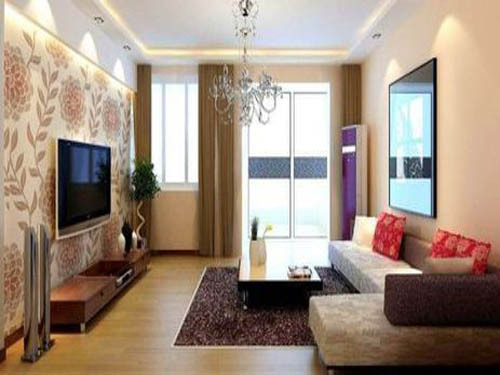
St. Augustine said: "The United States is an appropriate proportion of each part, plus a pleasing color." The ratio is the comparison of objects and objects, indicating the relative metrics between various relative surfaces. In aesthetics, the most classical proportion of distribution There is nothing more than a "golden section"; the scale is nothing more than a specific dimension between objects and people (or other easily recognized and invariable elements), and it is completely grasped by the impression of impression.
1. Stability and Lightweight: Stability and lightness are almost the portrayal of the Chinese people's innermost pursuit. Orthodox introversion, rationality and sensibility are compatible and form a perfect way of life. If you use this attitude to decorate your home, it's a lot like the Rococo style. The rococo style furniture, which is characterized by its lightness, naturalness, simplicity, and fluency, has been used to the fullest of curves. It has been extremely fashionable in recent years.
2. Reconciliation and Contrast: “Contrast†is one of the forms of beauty. In home furnishings, the use of contrasting techniques is everywhere. It can involve every corner of the space, through the contrast of light and shade, the contrast of color and temperature, and the material. The contrast of texture, contrast between tradition and modernity...makes the home style produce more levels and more styles of change, so as to deduce various lifestyles with different rhythms. Reconciliation is an effective means of buffering and integrating the two sides.
3. Symmetry and Equilibrium: Symmetry refers to taking a certain point as the axis and obtaining the equilibrium between up and down, left and right. Symmetry and equilibrium reflect to some extent the philosophy of life and the golden mean. Therefore, this method is often used in classical Chinese architecture. Nowadays people in the decoration of living room often change on the basis of basic symmetry, resulting in partial asymmetry or contrast, which is also an aesthetic principle. Another method is to break the symmetry, or narrow the symmetry in the application of interior decoration, so that it produces a symmetrical beauty of change.
4, the master and follower and focus: When the protagonist and supporting role is very clear, the psychological will also settle down. If the relationship between the two is ambiguous, it can be confusing. Therefore, master-slave relationship is one of the basic factors that need to be considered in home furnishings. In the decoration of the living room, the visual center is extremely important. The attention range of the person must have a center point, so as to create a level of beauty of the primary and secondary levels. This visual center is the focus of arrangement.
5. Connection and transition: Hard and soft decoration is not difficult to achieve in harmony with each other in color and style. The difficulty lies in how to make the two “linkedâ€. This requires the use of “transitionâ€. Echoing is a balanced form of beauty and is a common practice in various arts. In the interior design, the transition and echoing are always accompanied by intuition, specifically between the ceiling and the ground, the table top and the wall, and various kinds of furniture... When the body and the color level transition naturally and ingeniously, they can often achieve unexpected results. effect.
6, comparison and association: comparison is a literary statement, in the form of aesthetics, it is inextricably linked with the association. The so-called association refers to people's psychological thinking process based on some kind of connection between things. Lenovo is the link and bridge between what is in front of the eye and the similar, opposite, or related things that have been in contact with in the past. It can make people think more openly and have a broader vision, which leads to aesthetic appeal. Lenovo's content is known and objectively existed, using comparative techniques to associate abstract conscious activity with specific images through association.
7. Unity and change: The overall design of home furnishings should follow the principle of form beauty with “diversity and unityâ€. According to the size, color, and location, it should be an integral part of the furniture and be an indoor scene, creating a natural harmony. With the vitality of "unity and change"; furniture should have a unified artistic style and overall charm, the best set of custom or try to pick the color, pattern style is more consistent, coupled with cultural integration, further enhance the quality of the living environment.
No harmful element & environmental friendly. Widely apply to food&beverage cans, like milk poudre cans, tomato paste cans, cheese cans, edible oil cans, pepper cans, sardine fish cans, tuna fish cans, etc.
1. Technical standard: BS EN 10202, DIN EN 10203, GB/T2520 , JIS G3303
2. Steel type: MR, SPCC3. Thickness: 0.115 - 0.50 mm
4. Width: 600 - 1050 mm
5. Length: 600-1200mm
Tin Coating: ordinary 2.8 or 2.8g and 5.6g or 5.6g, we can produce according to customer's requests
Food Can Tinplate,Foods Cans,Can Packing,Prime Tinplate
Jiangsu Guolian New Material Co., Ltd. , https://www.cntinplate.com